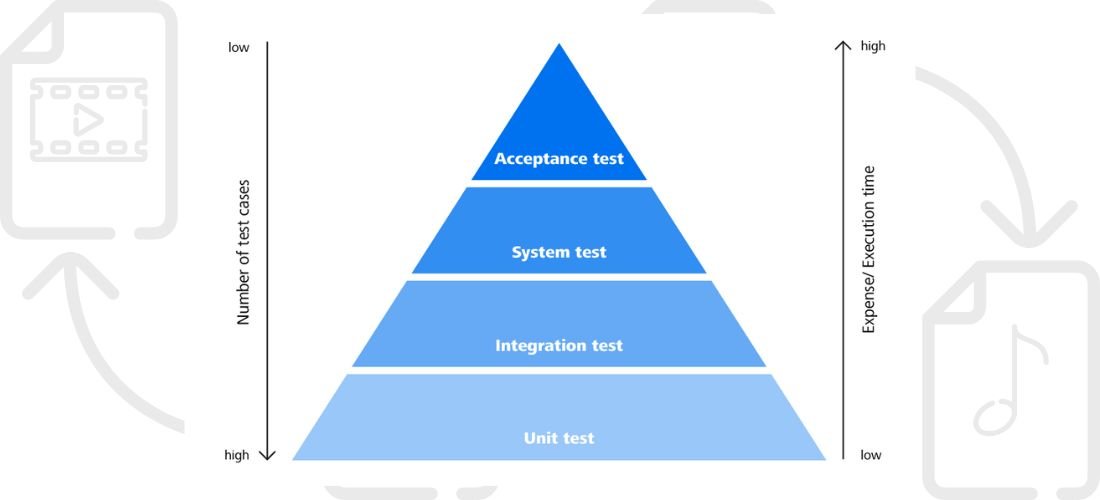Maximizing Efficiency With the Test Automation Pyramid is a beneficial method that helps solve the issues in software testing and later tries to fit it into the firm of hierarchical structure. It lays it so that the end-to-end test comes at the top, the API test in the middle, and the UI test at the base. The main scope of the testing pyramid is ensuring that the utmost efforts should be paid to tests that are intelligent, fast, reliable, and easy to do. Moreover, it helps provide the best quality, stable releases, and improved code quality. In this article, we will talk about the testing pyramid, what it is, etc.
What is the Maximizing Efficiency With the Test Automation Pyramid?
The testing pyramid is one of the most flexible topics, and people have molded it according to their opinions. Cohn, the software engineer and scrum pioneer, introduced this concept in 2009. He discussed it in his book Succeeding with Agile: Software Development using Scrum. Mike’s primary purpose behind introducing the testing pyramid is that with its help, we can easily detect the challenges that arise while managing automated testing in software development. Moreover, it is highly beneficial to use Agile Methodologies. The key idea is that the developers and the testers can use and look after various levels of testing, which can improve the amount of effort. However, this pyramid contains the following levels:
Also Read:- Justoctane SEO Services Boca Raton | gamerxyt.com categories
- Unit Tests
The unit test comes first and forms the base of the pyramid. The main work of this pyramid is that it helps focus on the single units and small codes. If we look at their structure, they are large but still easy and quick to write and execute. Moreover, the Unit tests can be run quickly as they are smaller. It is necessary to ensure that the changing dynamics do not hinder the present functionality and maintain the high-quality code standard during the development lifestyle.
- API Tests
With the growing APIs, the interaction between the application and external system has changed to a greater extent. Many business logic are implemented only according to the API layer. That is why ur is a crucial part of any modern application architecture. However, the more significant amount of flexibility and scalability is the reason behind the considerable jump in the architecture. However, to ensure the application’s reliability and stability, you should go for the appropriate testing of the APIs. If we focus on the API, we can easily ensure that business logic is working better and the application can easily handle the traffic and usage. If we conclude that API is the backbone of any application, it is essential in ensuring its performance and durability.
API testing is considered a beneficial and powerful tool for applications in its functioning. It is a valuable component that can add value to our automation efforts. Various kinds of API testing help provide reliability and stability to our application.
- One of the API tests is test data generation. In this testing, you have to ensure that the data that you are presenting to the people should be represented in a natural–time manner. This way, you can detect bugs and potential issues when test data is uncovered. Moreover, if you use API tests for data generation, then breach and automate the data creation process.
- API tests are the components of shift left testing. It helps focus on detecting interaction between the various software components instead of testing the user interface. This is beneficial because it ensures the developers can catch the bugs before they become significant problems. When a system is in isolation, we can detect the components with the help of this, making the process much easier. This helps with more efficient and worthy testing.
- Moreover, in this digital era, where users like to have quick satisfaction regarding their requirements, we all must have an efficient testing procedure. If the test continues for the long run, the development process might slow, resulting in slow development progress. However, with the help of API tests, we can quickly improve the timing of the execution and shorten the span of the development cycle.
- UI Tests
It can be seen at the top of the testing pyramid and is considered essential in providing the information to the end users as they will experience it. It looks after the services like databases, APIs, etc. The test end is considered the most complex and needs much time to execute. User interface tests must be done before the release; they are the outcome of everything. However, it is different from the other two as they have a broader scope and are considered comprehensive. What causes an issue among the users is that it is much more time-consuming and labor-consuming than the other two tests. This is why users run it less frequently. It uses an accurate time method as it helps validate the entire application flow.
Also Read:- Meet the Iconic Couple from the Woodstock Album co – tymoff | The Correct Spelling is School, Not School. Some Pe -Tymoff
Integration Tests
Integration tests are the middle or test steps of the pyramid testing. These tests are used to check out the interaction between a wide range of external systems and modules. If we compare it with unit tests, we can see that these are much more expensive, least in number, but challenging to execute. The integration tests should run less than the unit tests. We can use them in the development cycle once significant changes are made in the project’s main branch. It ensures that a granular unit test is performed for every minor change. However, it also ensures logical and functional steps are taken during critical situations. Also, it helps balance things so that a stable and recognized outcome can be received.
Conclusion
Test Automation pyramid is a widely used and beneficial tool for maximizing the efficiency in Software testing. If we work on the pyramid through unit tests only and then continue with the scope of testing, we can get the best and most comprehensive results of our tests. Moreover, if we leverage the API tests, we can ensure that the software application meets the requirements and satisfies the customers’ needs.

